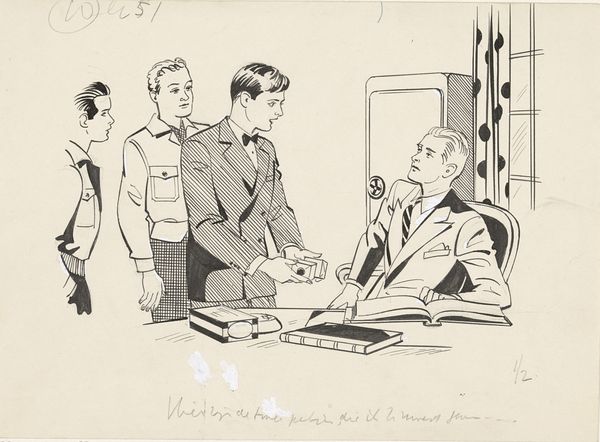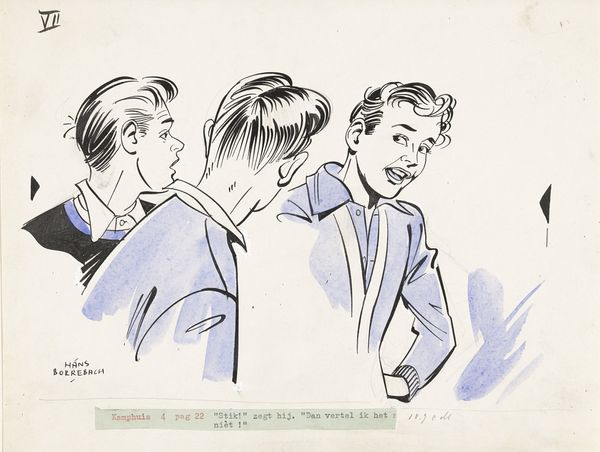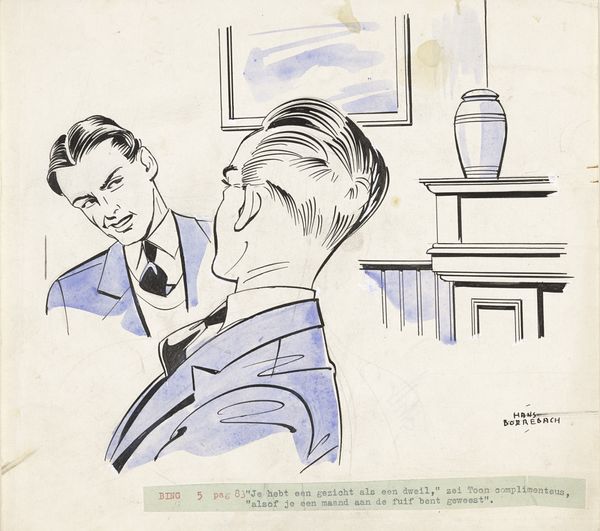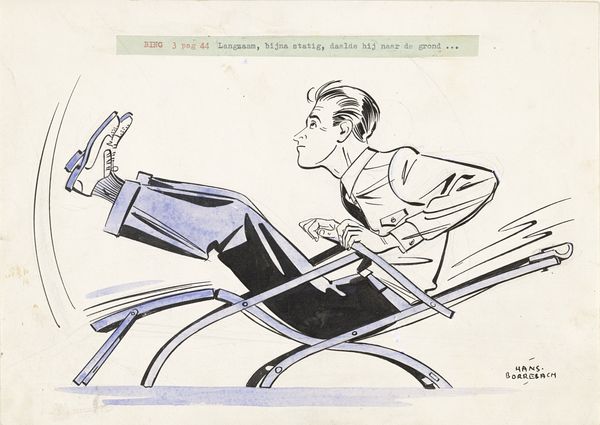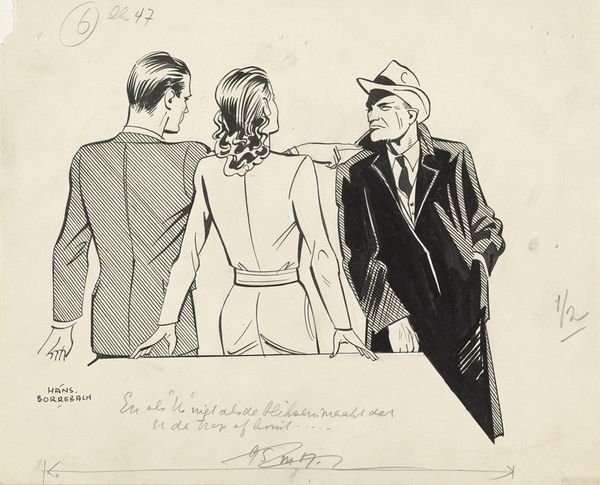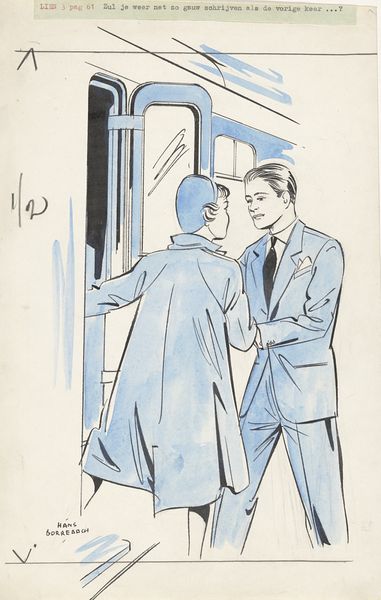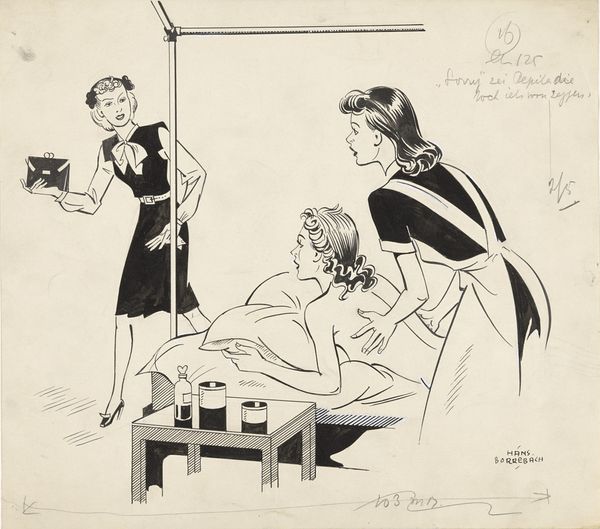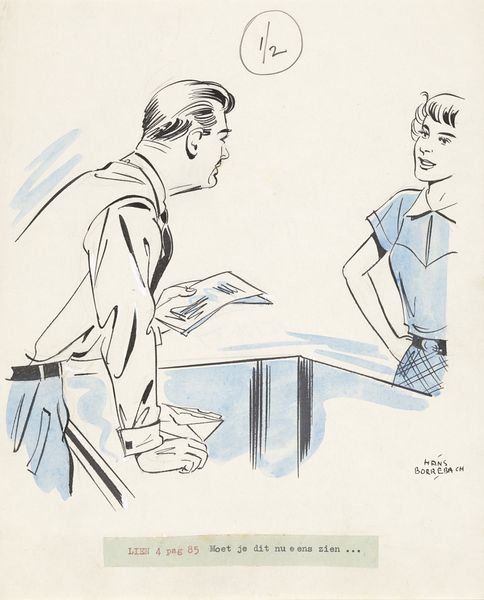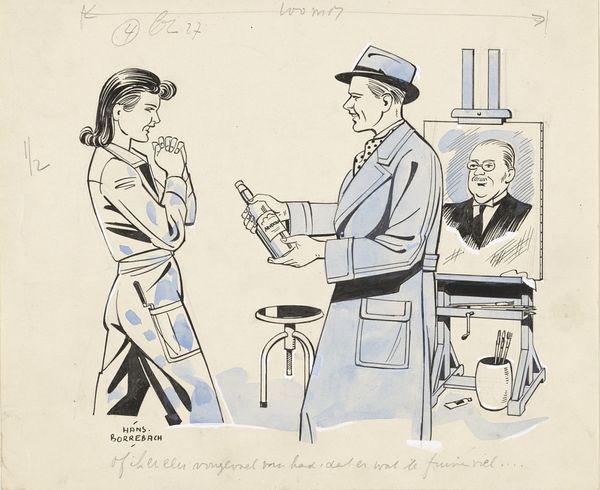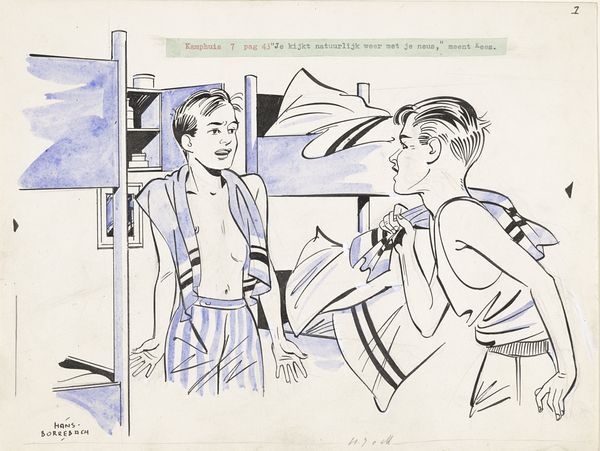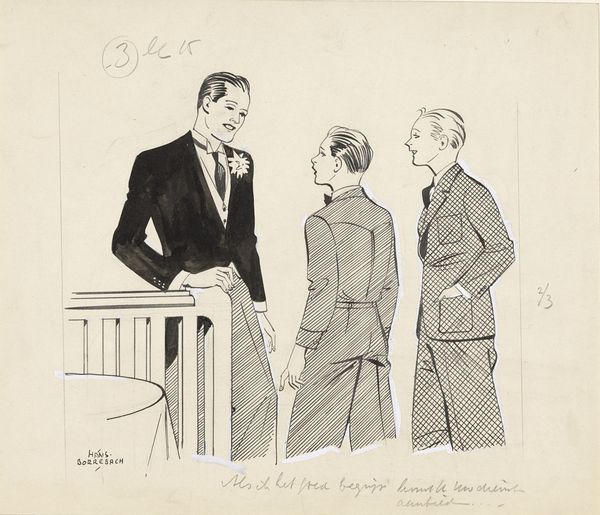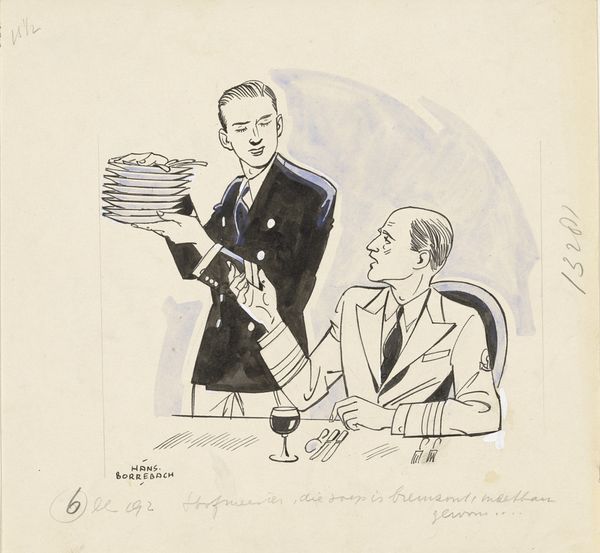
drawing, ink, pen
#
portrait
#
drawing
#
comic strip sketch
#
imaginative character sketch
#
cartoon like
#
cartoon based
#
caricature
#
cartoon sketch
#
personal sketchbook
#
ink
#
idea generation sketch
#
comic
#
pen
#
cartoon style
#
storyboard and sketchbook work
#
cartoon carciture
Dimensions: height 211 mm, width 302 mm
Copyright: Rijks Museum: Open Domain
Editor: So, here we have Hans Borrebach’s “Man leest een toespraak van een vel papier,” or “Man Reading a Speech from a Piece of Paper,” likely made before 1953. It’s a pen and ink drawing with a little bit of watercolor. There's almost something retro and slightly unsettling about the men depicted. How do you interpret this work, particularly within its historical context? Curator: The cultural context is crucial here. This image seems to be rooted in the post-war era, a time of rebuilding and renegotiating social dynamics, and its social circles may have shaped Borrebach’s artistic subjects. Editor: Interesting. So, how does this potential social commentary influence how we see the artwork? Curator: Think about it this way: What institutions or gatherings are implicitly referenced in the artwork’s speech and presentation setting? It encourages questions about power dynamics. Who is included in those circles, and who isn’t? Does the slight cartoonish style downplay the real impact that clubs have on the sociopolitical landscape of that time? Editor: So, the choice of style—something almost like a cartoon caricature—can serve as a commentary itself? Is it perhaps a way of making these figures less intimidating or maybe a bit ridiculous? Curator: Precisely! This caricature plays a key role, by perhaps criticizing societal norms or political elites. Now what do you notice about those details in how it functions visually? What’s drawn our attention? Editor: The contrasting formality of suits juxtaposed with slightly goofy facial features. Perhaps a hidden critique of those circles, a questioning of their inherent authority and how it translates on an everyday life of that period? Curator: Precisely. It’s also vital to consider the distribution methods and target audience during the drawing’s lifetime, along with what social dialogues Borrebach wanted to create within its audience. How it contributes to a conversation about society’s elites is worth investigating too. Editor: It reframes how I see the image. I now see it less as just a humorous drawing, but rather as a visual document reflecting social and cultural norms, questioning how we create boundaries among communities. Thanks. Curator: It's a reminder of how artistic production interacts and critiques larger cultural forces. Thank you!
Comments
No comments
Be the first to comment and join the conversation on the ultimate creative platform.

